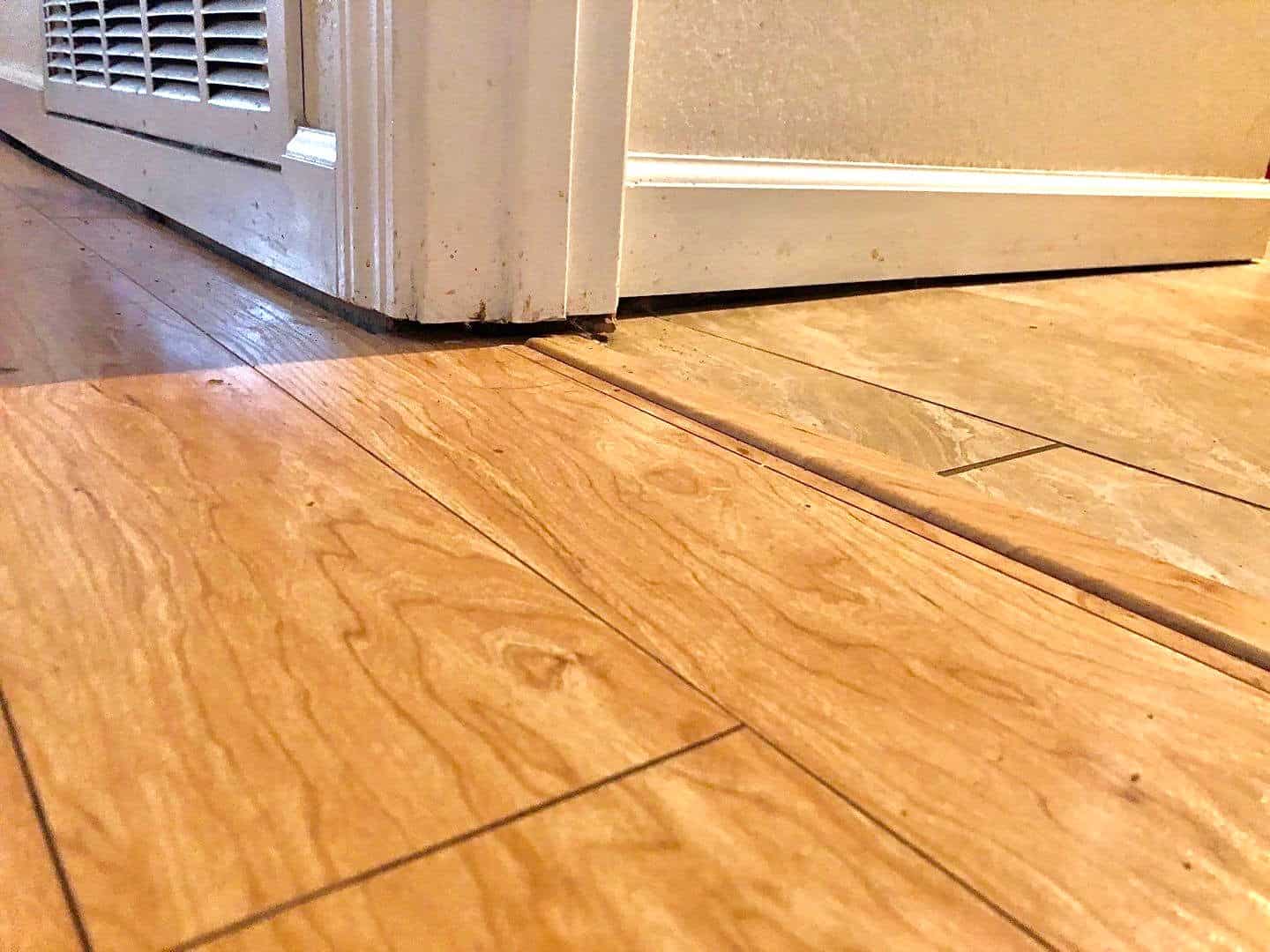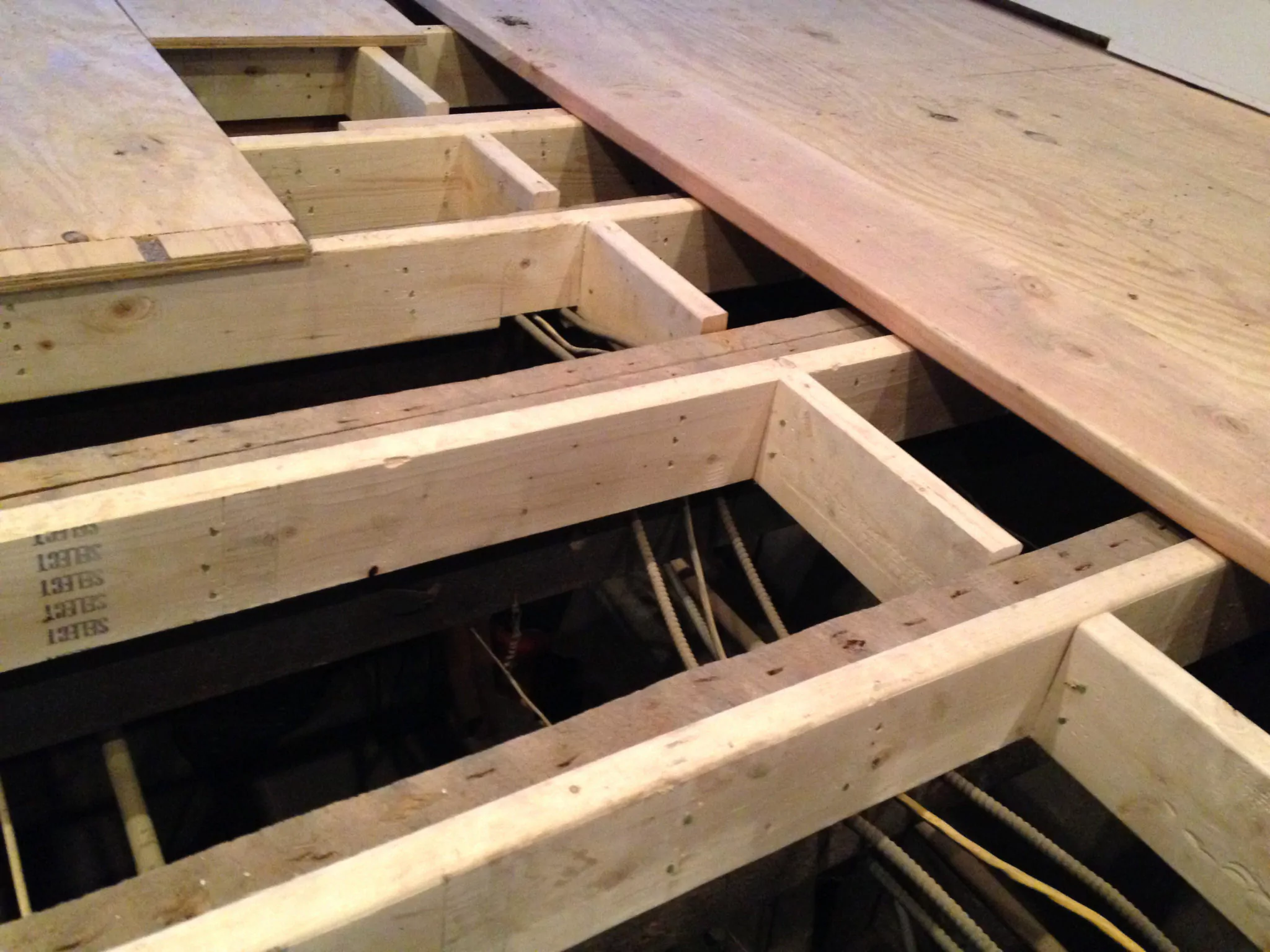Finding out that there’s something wrong with your home’s floor is always unsettling as it doesn’t feel like a problem that’d be easy to fix. And, sadly, it often isn’t. It’s also almost always manageable, however, so you don’t need to necessarily start worrying outright either.
This problem is especially common for older homes but it can also happen in a new house too – the possible causes there are just fewer. Old or new, your home will often need a professional inspection too, to determine the exact cause, parameters, and severity of the problem, however, there are plenty of things you can do beforehand.
So, let’s go over how to diagnose and how to fix uneven floors in an old house. We’ll examine the 5 most common causes of uneven floors and what their best solutions are.
Figuring out how to fix uneven floors in an old house – the first step
For a lot of people inexperienced in DIY home repair calling a floor repair contractor can seem like the obvious first step. And that’s not really a bad idea, provided that you don’t mind having to spend a little extra even when you maybe didn’t need to.
What we’d recommend, however, regardless of how experienced you are, is to first do a quick inspection yourself and gather as much info about the situation as you can. This way you may be able to forego having to call a contract unnecessarily if the problem turns up to be easy to deal with or, at the very least, you’ll have more info to give the contractor once they arrive.
What are the main reasons for an uneven house floor and how to address them?
There are a few simple ways to categorize uneven floor problems, particularly based on the source of the problem and on its effect.
Based on the source:
- Surface-level problems – issues that are just below the flooring and can be easily accessed and addressed from above.
- Foundation-level problems – those are issues with the house’s foundation, commonly due to neglect of its basement or crawlspace.
Effect or symptoms of the problem:
- Slanted or sloped floor – the floor itself is relatively even but it’s not perfectly horizontal.
- Indented floor – the floor used to be even but parts of it are now somewhat dented, forming a slight pit in the room.
- Swollen floor – the floor used to be even but now there are swollen areas in it.
As you’d expect, the causes of each of these problems are quite different and should be treated in different ways.
1. The house just has a bit of a slant because it was made that way

The first very common issue people find when moving into an old house is that the floor – either in the whole house or in certain rooms – is just a bit slanted. Similarly, the walls and ceiling often aren’t perfectly even either.
While worrying at first and annoying if the slant is overly pronounced, this issue is often not actually problematic. In some old houses, the beam foundations are just not installed all that precisely and there is a bit of a slant to the floor.
That being said, the exact causes of the issue should always be inspected thoroughly – preferably before you’ve finalized your purchase of the house – as there can also be more serious issues with the home’s foundation.
2. The floor is sloped because of a foundational footer issue
Floor slopes can often be caused by issues that are beneath the house’s foundation – not with the foundation itself. This can be one of the most unfortunate possible causes because there is often nothing we can do. An inspection of the house’s foundation will determine if the issue is in the foundation or beneath it.
You will need to call a foundation repair company to look into it. The issue is sometimes fixable – for example, if the problem is that the street’s sewers near your house are affecting the ground beneath your home. In other cases, however, the ground may just have moved a bit too much and generally be too unstable for a house anymore.
3. The house’s sill may have deteriorated
One of the most common issues is indeed with the foundation itself, not with anything underneath it. In such cases, the floor can easily slant or slope, or it might start sagging in places.
Such damage to the foundation can really be caused by all sorts of things – crawlspace or basement moisture, insect damage caused by carpenter ants or termites, water damage from a leaky pipe, rot caused by excess moisture, poor drainage from the pipes, groundwater flowing too close to the foundation, and much more.
The solution to the problem will be different based on the cause of the issue. In most cases, the homeowners will first need to address the cause of the problem – stop the water leak, deal with the insect infestation, and so on. Water damage is typically much messier and trickier to deal with too.
The second step would be to either repair the damage or replace the damaged parts of the foundation. This can sometimes be done with things such as a leveling compound and cement but if the issue has grown to be so bad that it sagged your floor, the foundation repair will likely include installing new foundation beams in some places.
In essence, most fixes go far beyond just getting a floor leveler and some nails which is why it’s usually smart to just get professional help as the structural damage at that point is just too high. The repair costs of professional contractors can often feel too high but, unless you’re fully prepared to do a large-scale foundation repair yourself, it tends to be the best and safest way forward.
4. The beams and floor joists below the floor may have deteriorated, leading to sagging and dipping

A sagging floor is also possible simply from old age. Having an old joist somewhere under your home’s floors will naturally lead to some dipping even if there is no water damage or insect infestation to additionally deteriorate the joists.
Replacing or repairing a floor’s joists can be expensive, usually in the 3-digit range and above. It’s also one of those things that are best done by professionals but it’s usually easier than most of the foundational issues above.
Depending on the exact extent of the problem you may not even need to replace the whole joist. Instead, it’s often enough to just sister a new piece of treated lumber onto the joist. This can even be done in the case of rotted floor joists, provided that the rot hasn’t set too much into the wood (no more than the surface 1 inch of the joist) and that you’ve cleared the rot first.
5 Bumps in the floor are typically caused by water damage
Noticing a high spot in your laminate or hardwood floors usually means a wholly different type of problem. Such “bouncy floors” tend to indicate the presence of extra moisture under the floor surface. Such moisture is a major cause of uneven floors and it happens either when:
- There’s been moisture seeping into your floor from below or outside.
- You’ve spilled a lot of water on top of your floor that you haven’t then cleaned fast and properly enough.
The former problem happens very often after blow radiators have spilled their water contents on the floor or when there has been a spillage from a washing machine, from the bathroom, or from any other such place.
The spillage will often have to be substantial enough but even if you clean most of it and only a small part of the water has managed to get under the laminate or the floorboards, that can be enough. The floor may not start getting bumpy for a couple or a few months after the incidents, depending on how much water has gotten through, but it will rise up eventually.
Unfortunately, once the floor has started to rise, it’s usually too late to turn up the dehumidifier in the room. What usually needs to be done is to remove the whole flooring, clean up the rot and mold that have started to appear thanks to the water, dry everything as well as you can, and then install a new floor. All of this can be done by an enthusiastic DIYer but a professional will usually still be worth their fee.
In conclusion
As you can see, fixing uneven floors can be frustrating but there almost always is a solution, especially if you catch the problem soon enough. The problem will often become unmanageable if you ignore it for long enough, however, which is sadly often the case with old houses that have either been left uninhabited or neglected for a while.
In the latter case, you’ll likely almost always need professional help. If you’ve generally been taking good care of your home, however, and you’ve just noticed a slight unevenness, you may be able to deal with it easily enough on your own. Either way – good luck!